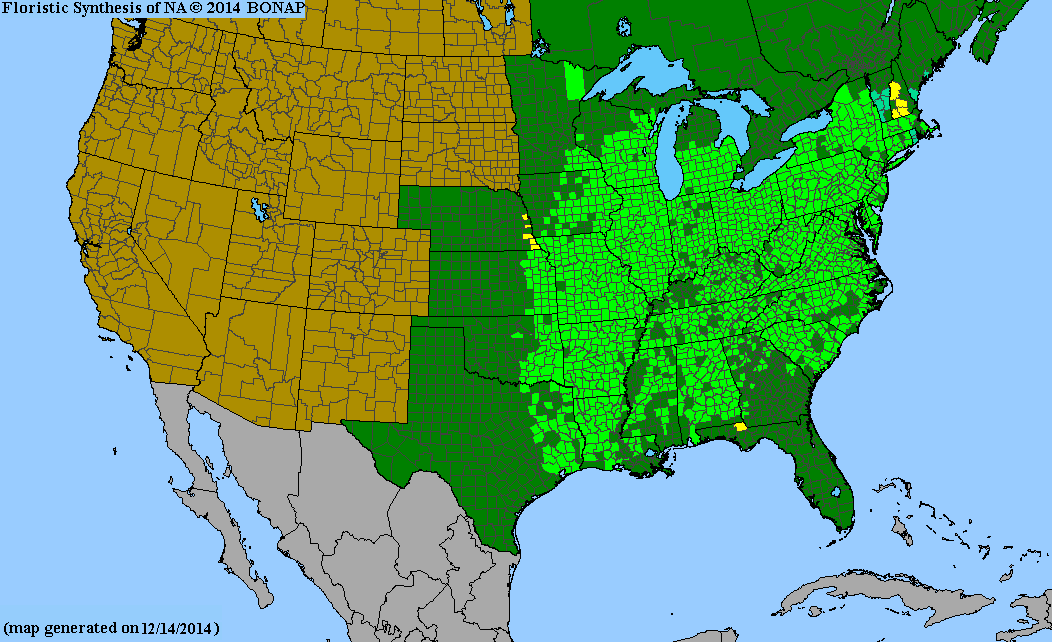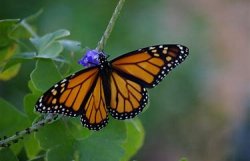Areas where Podophylum peltatum grows:

It shows it growing in Walker County, where the Sam Houston National Forest is partially located. I saw a lot more of pictures showing clumps of Mayapples growing in wooded, near sunless areas.
American Mayapple Fruit (Scientific name is Podophyllum peltatum L.)

Podophyllum - WikipediaBadger2, on the chance you might share your knowledge or learn from theirs, I am including the Wikipedia article's bibliography in the hopes the links are current. I pray you all have a lot in common scientifically. I'm glad to know that both plants are know to grow in my count after looking at the maps, but I'm sure they'd love to know what you do about this unique plant:
References[edit]
I bet you know what these folks might care to know if they don't already. Sorry for being a rank amateur in the scientific community.
Well the links worked once I posted them, but didn't work in my posting field. lol

It shows it growing in Walker County, where the Sam Houston National Forest is partially located. I saw a lot more of pictures showing clumps of Mayapples growing in wooded, near sunless areas.
American Mayapple Fruit (Scientific name is Podophyllum peltatum L.)

Podophyllum - Wikipedia
References[edit]
- ^ 1896 illustration from Franz Eugen Köhler, Köhler's Medizinal-Pflanzen
- ^ The Plant List, Podophyllum peltatum L.
- ^ Linnaeus, Carl von. 1753. Species Plantarum 1: 505 in Latin
- ^ Tropicos, Podophyllum L.
- ^ Jump up to: a b Flora of North America, Vol. 3, Podophyllum Linnaeus
- ^ "Podophyllum peltatum". Germplasm Resources Information Network (GRIN). Agricultural Research Service (ARS), United States Department of Agriculture (USDA). Retrieved 28 March 2015.
- ^ Plants for a Future, retrieved 28 March 2015
- ^ "Podophyllum L.". Integrated Taxonomic Information System.
- ^ Biota of North America Program 2013 county distribution map
- ^ http://www.eattheweeds.com/podophyllum-peltatum-forgotten-fruit-2/
- ^ Podophyllum peltatum at USDA PLANTS Database
- ^ Watson, M.A. and five others. 2001. The developmental ecology of mycorrhizal associations in mayapple, Podophyllum peltatum, Berberidaceae. Evolutionary Ecology 15: 425–442.
- ^ "Puccinia podophyllin Schwein. Mayapple rust". Iowa State University, Ada Hayden Herbarium (ISC). Retrieved 2013-03-16.
- ^ Bunyard, Britt A. 2013 "Mayapple Rust Resurrection" FUNGI 6(1): 38–39.
- ^ Blanchan, Neltje (2002). Wild Flowers: An Aid to Knowledge of our Wild Flowers and their Insect Visitors. Project Gutenberg Literary Archive Foundation.
- ^ Moraes, R.M., H. Lata, E. Bedir, M. Maqbool, and K. Cushman. 2002. On American Mayapple as a practical source of podophyllotoxin p. 527–532. In: J. Janick and A. Whipkey (eds.), Trends in new crops and new uses. ASHS Press, Alexandria, VA.
- ^ Jump up to: a b Ernest Small and Paul M. Catling (1999), "Podophyllum peltatum L. (May-apple)", Canadian Medicinal Crops, NRC Research Press
- ^ Brunton LL et al. Goodman and Gilman's The Pharmacological Basis of Therapeutics, chapter: 61. Cytotoxic agents/Epipodophyllotoxins Twelfth Edition ISBN 978-0-07-162442-8
- ^ Lewis, W.H. and M.P.F. Elvin-Lewis. 1977. Medical Botany. Plants Affecting Man's Health. Wiley, New York. 515 p. p. 123-124.
 Media related to Podophyllum at Wikimedia Commons
Media related to Podophyllum at Wikimedia Commons Data related to Podophyllum at Wikispecies
Data related to Podophyllum at Wikispecies
I bet you know what these folks might care to know if they don't already. Sorry for being a rank amateur in the scientific community.

Well the links worked once I posted them, but didn't work in my posting field. lol







